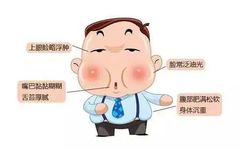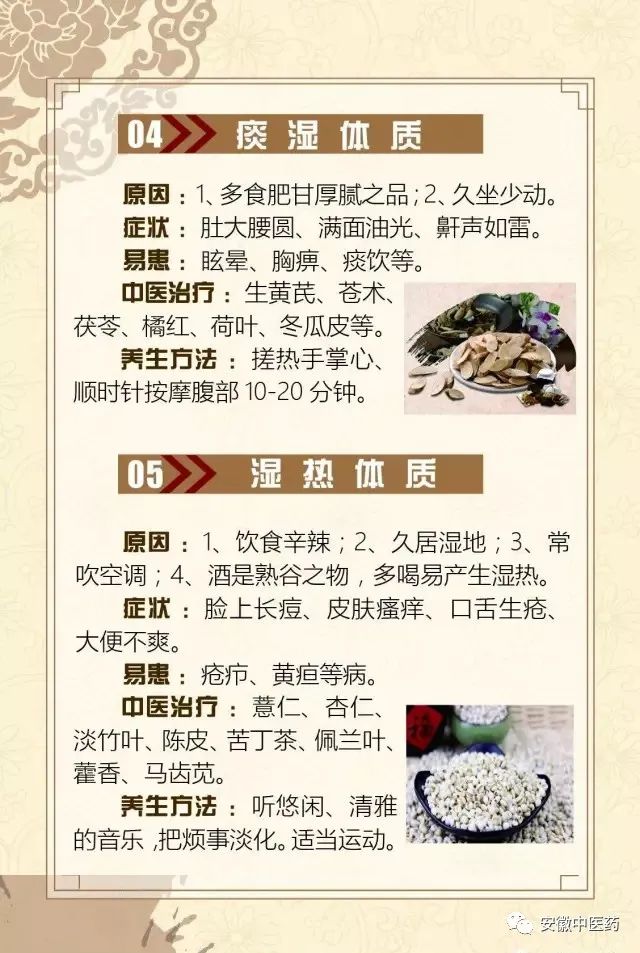
 Phlegm-Damp Constitution
Phlegm-Damp Constitution 
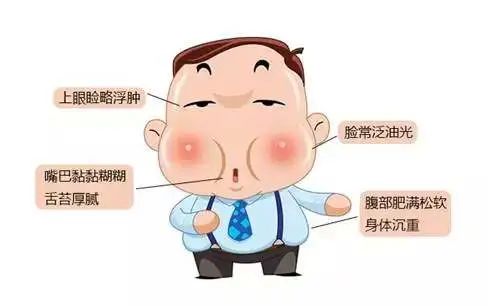
This group of people tends to be overweight, with a full abdomen, pale yellowish complexion, oily skin, excessive sweating that is sticky, puffy eyes, chest tightness, phlegm accumulation, and a tendency to feel drowsy.
They often have a sticky or sweet taste in the mouth, prefer fatty and sweet foods, have a greasy tongue coating, and a slippery pulse.
They are generally mild-mannered and patient.
They are prone to conditions such as diabetes, stroke, and chest obstruction.

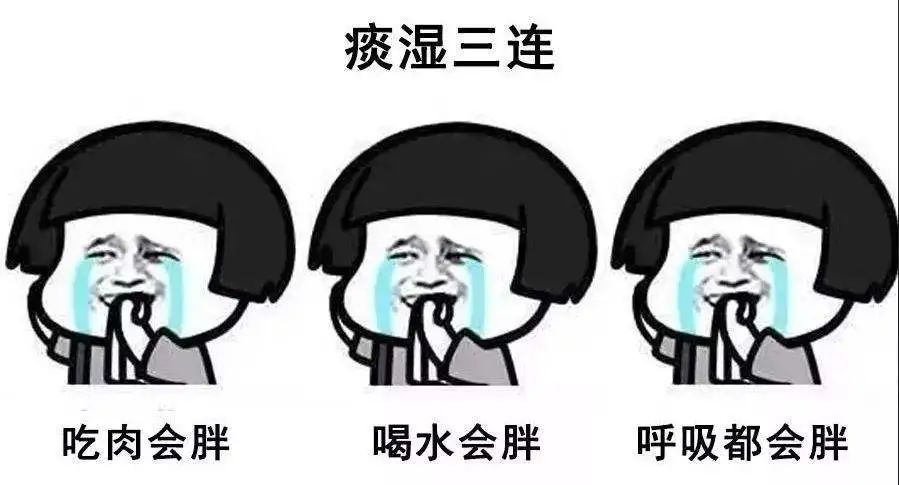
1
Common Manifestations
Body Type: Obese
Muscle: Soft and full abdomen
Skin: Excessive oil secretion
Perspiration: Excessive and sticky sweat
Facial Features: Slightly swollen upper eyelids
Diet: Preference for fatty meats and sweet, greasy foods
Personality: Mild-mannered and patient
2
Identification Points
Often feels chest tightness or abdominal bloating;
Feels heavy and uncomfortable in the body;
Excessive oil secretion on the forehead;
Upper eyelids are more swollen than others (slight swelling);
Often has a sticky feeling in the mouth, with a tendency for phlegm;
Thick and greasy tongue coating;
3
Tongue and Pulse Manifestations
Tongue Quality: Enlarged tongue body
Tongue Coating: Thick and greasy
Pulse: Slippery
4
Nurturing Principles
Strengthen the Spleen, Resolve Dampness, Transform Phlegm, and Clear Turbidity.
1. Lifestyle Adjustments: Individuals with a phlegm-damp constitution often have significant internal dampness, which obstructs the spleen’s qi. They commonly exhibit excessive sleepiness, fatigue, and a tendency to be quiet, especially after meals when dampness can further burden the spleen.
Therefore, it is advisable to develop a habit of going to bed early and rising early, and to avoid lying down after meals; engaging in moderate household chores or taking walks is recommended.
Living spaces should ideally be sunlit, maintaining a dry environment, frequently changing undergarments, and taking hot showers.
Wear loose clothing made from breathable natural fibers such as cotton, linen, or silk to facilitate sweat evaporation and eliminate internal dampness.
In humid and cold climates, reduce outdoor activities and avoid exposure to cold rain.
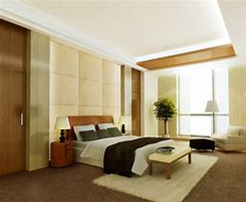
2. Exercise Adjustments: Individuals with a phlegm-damp constitution tend to retain phlegm and dampness in the body, leading to obesity and lethargy. Consistent moderate exercise is key to improving the adverse state of phlegm-damp constitution.
Exercise should be gradual, focusing on the duration of each session rather than intensity.
Based on individual physical condition and tolerance, older individuals with a phlegm-damp constitution can engage in gentle, sustainable activities such as brisk walking, Tai Chi, or fitness classes; younger individuals may participate in more vigorous aerobic exercises like ball sports, cycling, swimming, running, or martial arts.
Each exercise session should last at least 40 minutes.
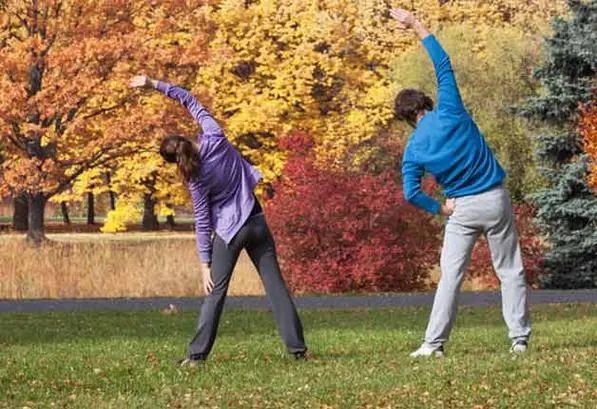


3. Dietary Adjustments: Individuals with a phlegm-damp constitution should consume a light diet, focusing on foods that can clear the lungs, transform phlegm, strengthen the spleen, and promote water metabolism.
Foods that can strengthen the spleen, transform phlegm, and resolve dampness include oats, buckwheat, coix seed (yi yi ren), lotus seeds, poria (fu ling), red adzuki beans, lentils, ginger, radishes, loofah, winter melon, and crucian carp.
Those with a phlegm-damp constitution, especially if overweight, should avoid rich, greasy, and overly sweet foods, as well as sour, bitter, and cold items such as fatty meats, turtle, bird’s nest, white fungus, walnuts, bananas, pears, vinegar, glutinous rice pastries, and candies.
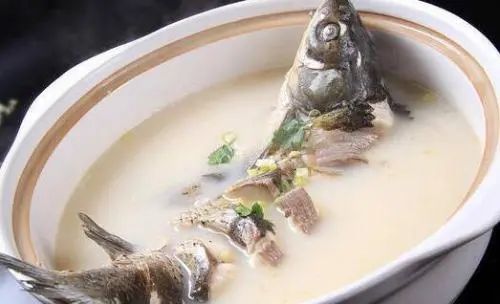
01
Crucian Carp Soup
Ingredients: 1 crucian carp (about 1000 grams), 50 grams of red adzuki beans, 6 grams each of dried tangerine peel (chen pi) and grass fruit (cao guo), 3 grams of fritillaria (chuan bei mu), appropriate amounts of vegetable oil, ginger slices, scallions, and salt.
Preparation: Scale the crucian carp, remove the gills and internal organs, and wash clean. Heat vegetable oil in a pot, sauté ginger slices and scallions until fragrant, then briefly fry the crucian carp. Soak the red adzuki beans, fritillaria, grass fruit, and dried tangerine peel in cold water for an hour, then stuff them into the belly of the crucian carp. Boil water in a clay pot, add the crucian carp, season with salt, and simmer on medium heat for 15 minutes before serving the fish and soup.
Effects: Clears the lungs, transforms phlegm, strengthens the spleen, and resolves dampness.
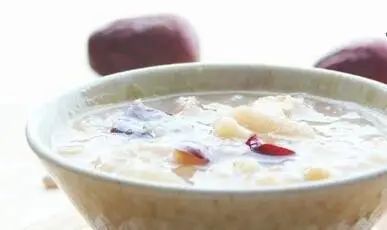
02
Coix and Lentil Porridge
Ingredients: 20 grams each of coix seed and red adzuki beans, 15 grams each of winter melon peel and white lentils, 20 grams of loofah fibers, and 150 grams of japonica rice.
Preparation: First, boil water with winter melon peel and loofah fibers, then strain. Add the remaining four ingredients to a clay pot, bring to a boil over high heat, then reduce to low heat and simmer until the porridge thickens and the beans are soft.
Effects: Strengthens the spleen, drains dampness, promotes urination, and transforms phlegm.
4. Meridian Health: Acupoints that can strengthen the spleen and benefit qi include Shen Shu (Spleen Shu), Wei Shu (Stomach Shu), Zu San Li (Stomach 36), and Qi Hai (Sea of Qi); acupoints that can resolve dampness and transform phlegm include Zhong Wan (Middle Cavity), Shui Fen (Water Point), and Feng Long (Abundant Bulge). Massaging or moxibustion at these points can improve one’s constitution.
① Shen Shu: Located below the spinous process of the 11th thoracic vertebra, 1.5 inches lateral. In a prone or sitting position, draw a line around the navel’s midpoint horizontally around the abdomen; the intersection of this line with the midline of the back is at the 2nd lumbar vertebra. From the 2nd lumbar vertebra, move vertically up three vertebrae to find the 11th thoracic vertebra. The depression below this spinous process, 2 fingerbreadths (index and middle fingers) lateral, is the acupoint.
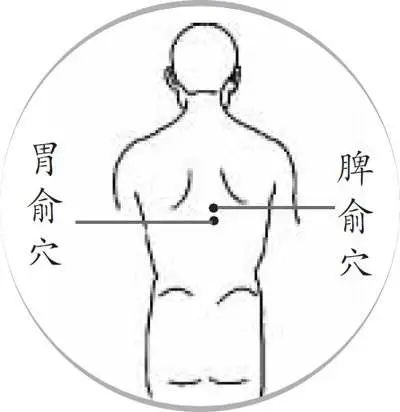
② Wei Shu: Located on the back, below the spinous process of the 12th thoracic vertebra, 1.5 inches lateral. In a sitting or prone position, the intersection of the highest points of both sides of the pelvis with the midline of the back is at the 4th thoracic vertebra. Move up four vertebrae from the 4th thoracic vertebra to find the 12th thoracic vertebra. The depression below this spinous process, 2 fingerbreadths (index and middle fingers) lateral, is the acupoint.③ Zhong Wan: Located in the upper abdomen, on the anterior midline, 4 inches above the navel.
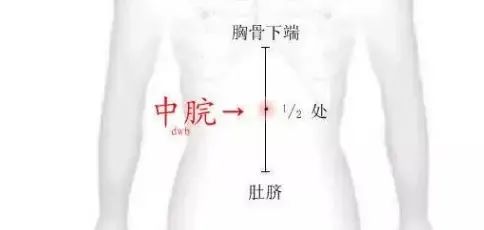
④ Shui Fen: Located in the upper abdomen, on the anterior midline, 1 inch above the navel.
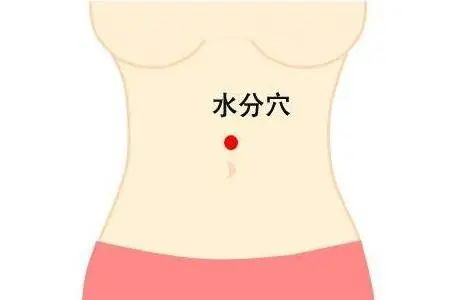
⑤ Qi Hai: Located in the lower abdomen, on the anterior midline, 1.5 inches below the navel.
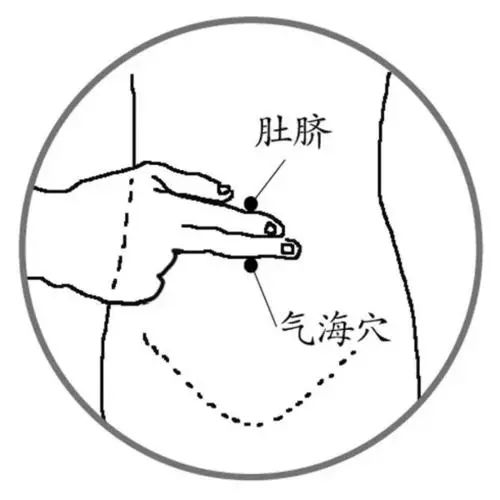
⑥ Zu San Li: Located on the outer side of the lower leg, with the knee bent at a right angle, 3 inches below the lateral side of the patellar ligament.
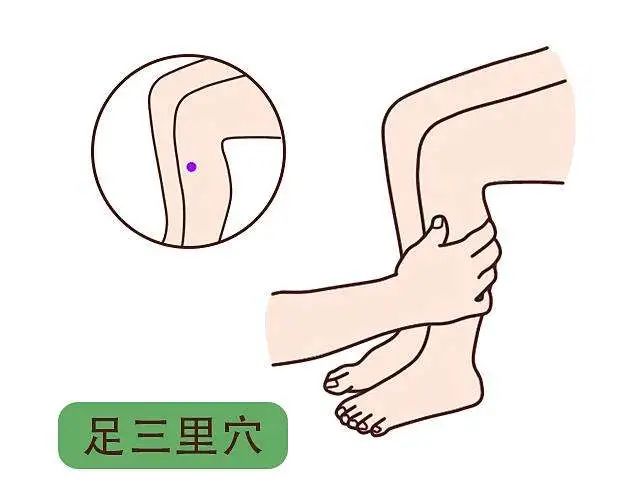
⑦ Feng Long: Located on the front outer side of the lower leg, 8 inches above the tip of the outer ankle, 2 fingerbreadths (middle finger) from the anterior edge of the tibia.
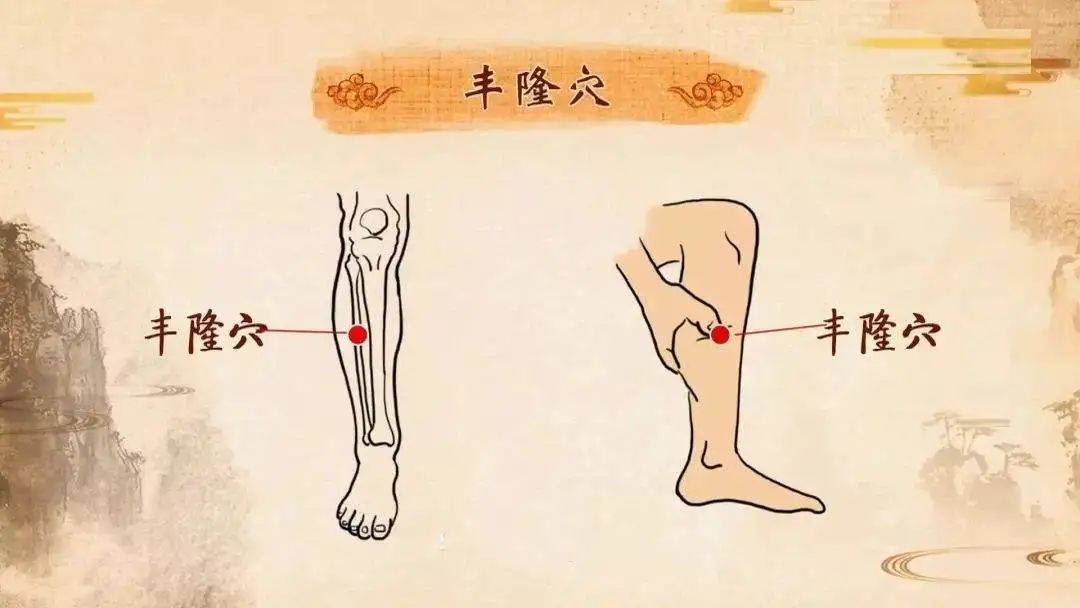
 Damp-Heat Constitution
Damp-Heat Constitution 

Damp-Heat Constitution


This group of people tends to be overweight, with a greasy complexion, prone to acne and skin infections;
They often experience a bitter taste in the mouth, heaviness and fatigue in the body, sticky or difficult bowel movements, yellow urine, men may have dampness in the scrotum, and women may have increased vaginal discharge. Their tongue is often red with a yellow greasy coating, and their pulse is slippery and rapid.
They tend to be irritable and easily angered.
They are prone to jaundice, heat conditions, etc.

1. Common Manifestations
Body Type: Average or slightly thin
Skin: Prone to acne and oily skin
Facial Features: Bitter taste, dry mouth
Bowel Movements: Dry or uncomfortable
Personality: Irritable and easily agitated

2. Identification Points
① Oily or shiny skin on the face or nose② Prone to acne or skin infections③ Often experiences a bitter taste or unusual mouth odor④ Sticky or uncomfortable bowel movements, feeling of incomplete evacuation⑤ Burning sensation during urination, dark yellow urine⑥ Yellowish, foul-smelling vaginal discharge (for women)⑦ Dampness in the scrotum (for men)
3. Tongue and Pulse Manifestations
Tongue Quality: Red tongueTongue Coating: Yellow and greasyPulse: Slippery and rapid
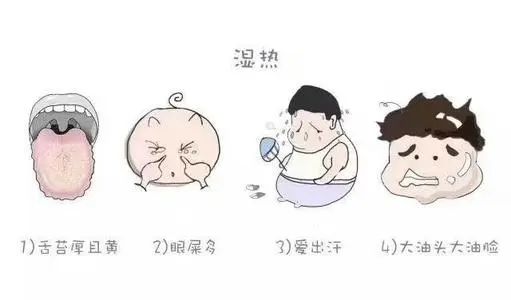

4. Nurturing Principles
Clear and Transform Damp-Heat, Promote Heat Dispersion.
1. Lifestyle Adjustments: Individuals with a damp-heat constitution are prone to heat conditions; thus, they should focus on nourishing yin and eliminating dampness. Prolonged late nights or stress can exacerbate damp-heat conditions.
Maintain a regular schedule, go to bed early and rise early, practice mindfulness before sleep, and ensure a cool and well-ventilated living environment, frequently changing clothes and bedding, and bathing regularly.
Smoking and drinking can worsen damp-heat conditions, so it is advisable to quit these habits and maintain a light diet.
2. Exercise Adjustments: Individuals with a damp-heat constitution can engage in high-intensity sports, such as competitive ball games, swimming, hiking, long-distance running, cycling, martial arts, and boxing.
High-volume, high-intensity training can help expel excess heat and fat from the body. During exercise, adding a small amount of salt to drinking water (without making it taste salty) can prevent excessive electrolyte loss.
Combine aerobic and anaerobic exercises; aerobic exercises include various endurance training like middle-distance running, swimming, and cycling; anaerobic exercises include strength and explosive training like weightlifting, sprinting, and boxing.
Avoid exercising in hot environments, and schedule workouts at least one hour after meals.
3. Dietary Adjustments: To change the damp-heat constitution, individuals should consume foods that are cooling, clear heat, and promote urination. Suitable foods include coix seed, lotus seeds, lotus root, red adzuki beans, broad beans, mung beans, mung bean sprouts, crucian carp, kelp, seaweed, snails, jellyfish, shrimp, winter melon, loofah, bitter melon, cucumber, and lean pork.
Avoid spicy, greasy, warming, and rich foods such as chili, garlic, lychee, and mango; limit consumption of white liquor, cream, organ meats, dog meat, old hens, beef, and lamb.
Cold Mixed Three Peels
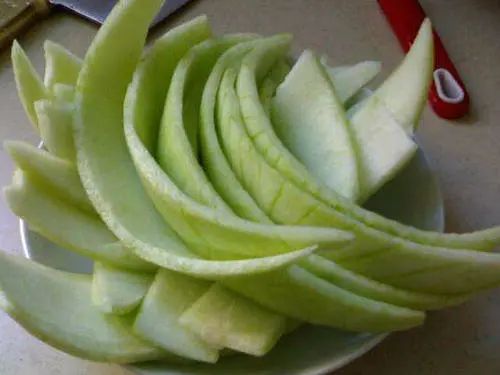
Watermelon Peel
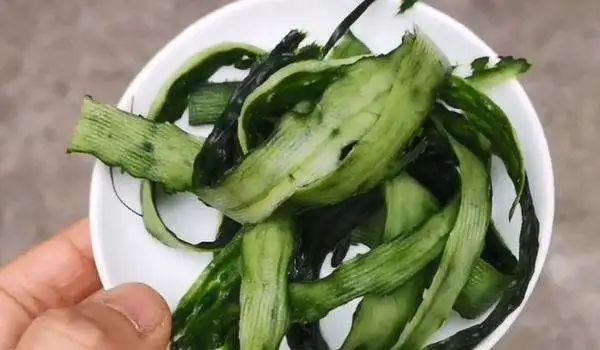
Cucumber Peel
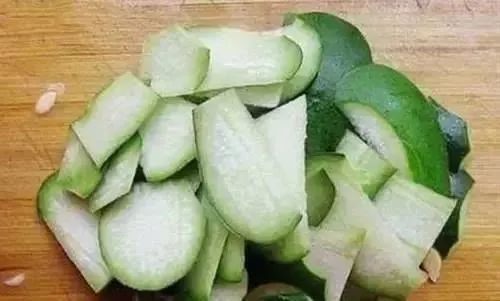
Winter Melon Peel
Ingredients: 200 grams each of watermelon peel, cucumber peel, and winter melon peel, with salt to taste.
Preparation: Scrape off the outer skin of the watermelon peel and the fuzzy outer skin of the winter melon peel, wash them, and blanch with cucumber peel in boiling water. After cooling, cut into strips, place in a dish, and mix with a little salt.
Effects: Clears heat, resolves dampness, and aids in weight loss.
4. Meridian Health: Massage the acupoints Xing Jian (Interspace), Qiu Xu (Mound of Hill), Yong Quan (Bubbling Spring), Yang Ling Quan (Yang Mound Spring), Yin Ling Quan (Yin Mound Spring), and Zhong Ji (Central Pole) to clear damp-heat; for chest fullness, loss of appetite, abdominal bloating, and bitter taste with nausea, add Wai Guan (Outer Pass), Zhong Wan (Middle Cavity), and Zhi Gu (Branch Ditch).
① Xing Jian: Located on the outer side of the foot, between the first and second toes, at the back of the web margin.
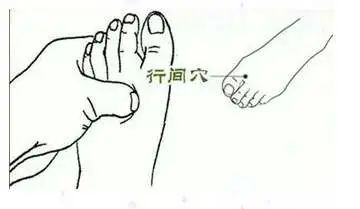
② Qiu Xu: Located below the outer ankle, in a sitting or supine position, press the depression at the intersection of the vertical line from the front edge of the outer ankle and the horizontal line from the lower edge.
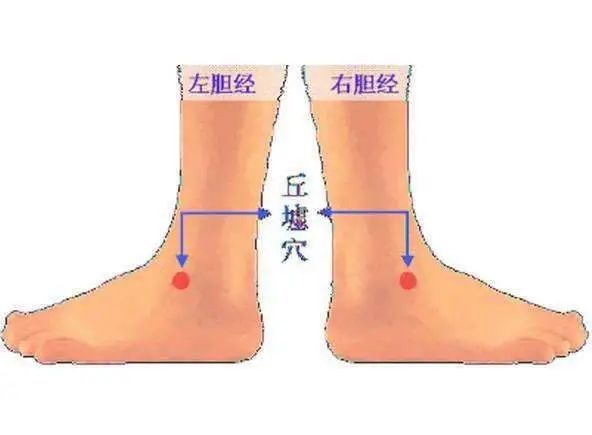
③ Yong Quan: Located on the sole of the foot, in the depression at the front of the foot when curled, at the intersection of the front 1/3 and back 2/3 of the line connecting the heads of the 2nd and 3rd metatarsal bones with the heel.
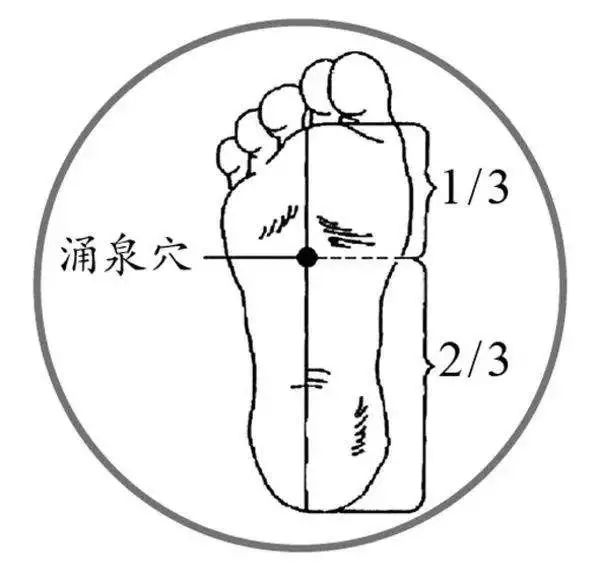
④ Yang Ling Quan: Located on the outer side of the lower leg, in the depression below the head of the fibula. In a sitting position, bend the knee at 90 degrees; the depression below the fibular head is the acupoint.
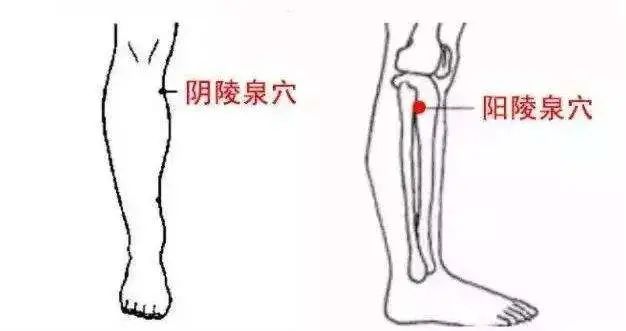
⑤ Yin Ling Quan: Located on the inner side of the lower leg, in the depression between the inner edge of the tibia and the lower edge. In a sitting position, use the thumb to push along the inner edge of the tibia upwards until the thumb reaches the depression below the knee joint, which is the acupoint.
⑥ Zhong Ji: Located in the lower abdomen, on the anterior midline, 4 inches below the navel. In a supine or sitting position, push down along the midline of the lower abdomen to feel a bone, which is the pubic symphysis. Divide the line connecting the midpoint of the navel and the upper edge of the pubic symphysis into five equal parts; the intersection of the upper 4/5 and lower 1/5 is the acupoint.
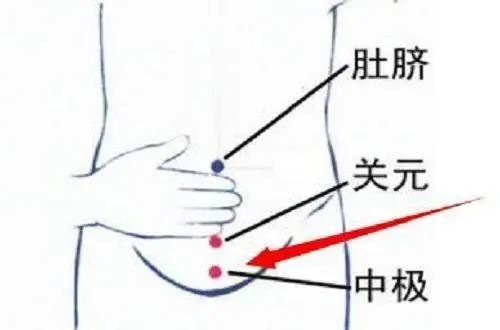
⑦ Wai Guan: Located on the dorsal side of the forearm, 2 inches above the midpoint of the wrist crease (two fingerbreadths, index and middle fingers), in the depression between the two bones, where pressing causes soreness.
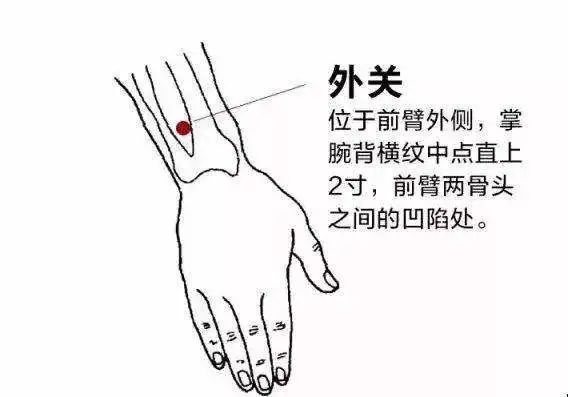
⑧ Zhong Wan: Located in the upper abdomen, on the anterior midline, 4 inches above the navel. In a supine position, touch along the midline to find the depression between the body of the sternum and the xiphoid process, which is the acupoint.

⑨ Zhi Gu: Located on the dorsal side of the forearm, 3 inches above the wrist crease, between the ulna and radius.
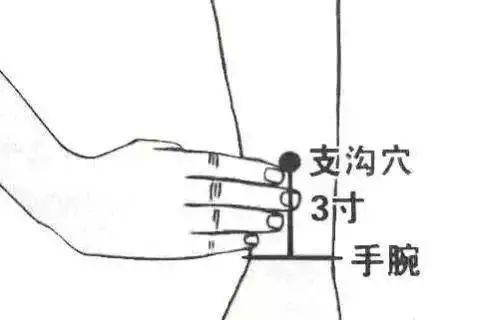
Source: Anhui Provincial Hospital of Traditional Chinese Medicine, Preventive Health Center

Hosted by Langxi County Traditional Chinese Medicine Hospital


